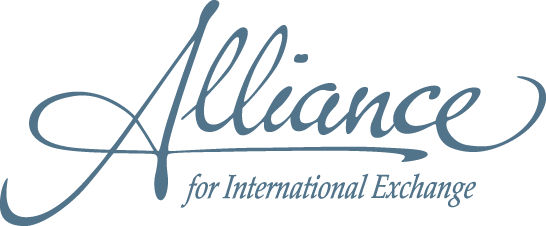By Andrea Bodine
Every February, Alliance staff and our Appropriations Working Group, consisting of members who implement Department of State funded exchange programs, formulate a funding request for the upcoming fiscal year. This ask is then used by Alliance members as a major talking point during our annual Advocacy Day with the Appropriations Committees, in addition to other touchpoints throughout the cycle.
The Appropriations Working Group recently decided on an ask of $808.6 million for DOS educational and cultural exchanges (ECE) in FY25. Here’s how we arrived at that number.
Each year’s ask formulation comes with its own considerations and challenges, and FY25 has been no different. The 2024 presidential election is around the corner, rising costs continue to impact program administration, and funding for FY24 has yet to be finalized. On Capitol Hill, appropriators are struggling to agree on any spending bills and budgets across agencies and departments remain uncertain as the threat of a government shutdown looms.
| Where are we now? Department of State Exchange Program Funding | |
| Current Enacted Level (FY23) | $777.5M |
| President’s FY24 Budget Request | $783.7M |
| House FY24 SFOPS Bill | $700.95 |
| Senate FY24 SFOPS Bill | $779.5M |
| Final FY24 Enacted Level | ? (Current continuing resolution expires March 8) |
| President’s FY25 Budget Request | ? (President’s budget expected to be released March 11) |
To triangulate our FY25 ask, we considered several factors:
First, we looked at the results of snapshot survey of our members intended to understand the “opportunity gap” – that is, the number of applications for programs vs. the number of spots available. The data showed clearly and compellingly that there is large unmet demand. The U.S. is engaging with only a fraction of highly qualified American and international exchange program candidates. More than 85% of demand for eight surveyed programs went unfilled in FY23, as funding was available for only 14% of applicants.
Second, rising costs and inflation have a significant impact on program implementation. We wanted to have a picture of what our funding level would look like if it at least kept pace with inflation. The Department of Labor Bureau of Labor Statistics’ inflation calculator shows that the current FY23 funding level of $777.5M, which was enacted in December 2022, one year later has the buying power of $803.6M, or a 3.4% increase.
Third, we looked at the recent history of ECE funding, which has seen a 10.8% increase over the past 5 years:
| FY19-20 | +4.9% |
| FY20-21 | +0.6% |
| FY21-22 | +3.1% |
| FY22-23 | +1.9% |
| FY23-24 | 0.0% to +0.3% (assuming flat funding or the Senate’s proposed number) |
The Working Group agreed that it’s reasonable to say that only in FY20 and FY22 have those increases (4.9% and 3.1%) allowed the programs to not lose ground and have some very modest growth. In other years, however, those small increases did not allow programs to keep pace with inflation and rising costs, let alone see growth.
Given these factors, the group concluded, the Alliance will ask for $808.6 million for ECE programs in FY25, a 4% increase from the FY23 enacted level. This ask allows us to strongly advocate for exchange programs while acknowledging the tough budgetary and political environment we face. And a 4% funding increase would allow programs to keep pace, while also providing the opportunity to meet at least a small fraction of unmet demand for exchange programs.
Increasing exchange funding would provide more opportunities for qualified Americans to participate in upskilling opportunities, as well as expand U.S. foreign policy effectiveness in critical regions. With more funding for exchange programs, the U.S. could:
- Share exchange experiences with more qualified young Americans that help build their career skills and global abilities.
- Take advantage of opportunities to engage more rising young leaders as Department of State exchange program alumni and citizen ambassadors, especially when other countries are expanding their investment in people-to-people exchanges.
We look forward to delivering our ask to Congressional offices starting on March 7 with Advocacy Day and continuing into the spring as the FY25 “appropriations season” gets into full swing.
